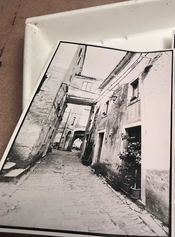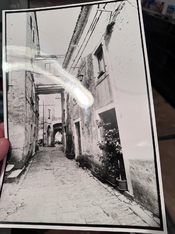Overcoating with a sheet of plexi more applies to framing options, not the print surface itself. That whole category of framing is called "face mounting", and there is a variety of kinds. I developed my own proprietary hermetically sealed method to do that, which would be quite expensive to do today, given the dramatic price hike in materials. Thirty years ago it was already a thousand dollar upcharge over normal framing cost per large print. It involved a special big vacuum chamber which I have since dismantled (took up too much space).
That linked service uses fairly common current technology, but doesn't factor the serious expansion/contraction differential between acrylic and the backing material, which comes into serious play on bigger sizes. An alleged 75 year warranty means nothing, since neither the company itself nor its clients are going to be around anywhere near that long. And under serious commercial lighting, the extrapolated fade rate is going to be faster anyway.
But one could hypothetically print a monochrome subject on present Fujiflex Supergloss RA4 polyester media. It would just be rather difficult to tame a black and white negative to neutrality without some sort of special digital tweaking and commercial laser output.
Otherwise, No - an acrylic face-mounted glossy RC print does not really match the deep "3D" look of face-mounted Ciba or Fuji Supergloss. I should know. I've done a lot of both. Ferrotyping of FB prints is something more subtle, with its own due niche, and suitable for prints in portfolios, and not just framed on walls. In this day and age, one could design their own oversized hot ferrotyping press without too much difficulty, though probably not inexpensively.
I will never forget the special look of ferrotyped little 8x10 dye transfer prints from back in the 60's, which were on Kodak F surface FB paper. I've also seen full gloss handmade color carbon transfer prints - beautiful, but also a bit unnerving seeing gloss with surface relief - I personally prefer looking at carbon prints which aren't so shiny.















